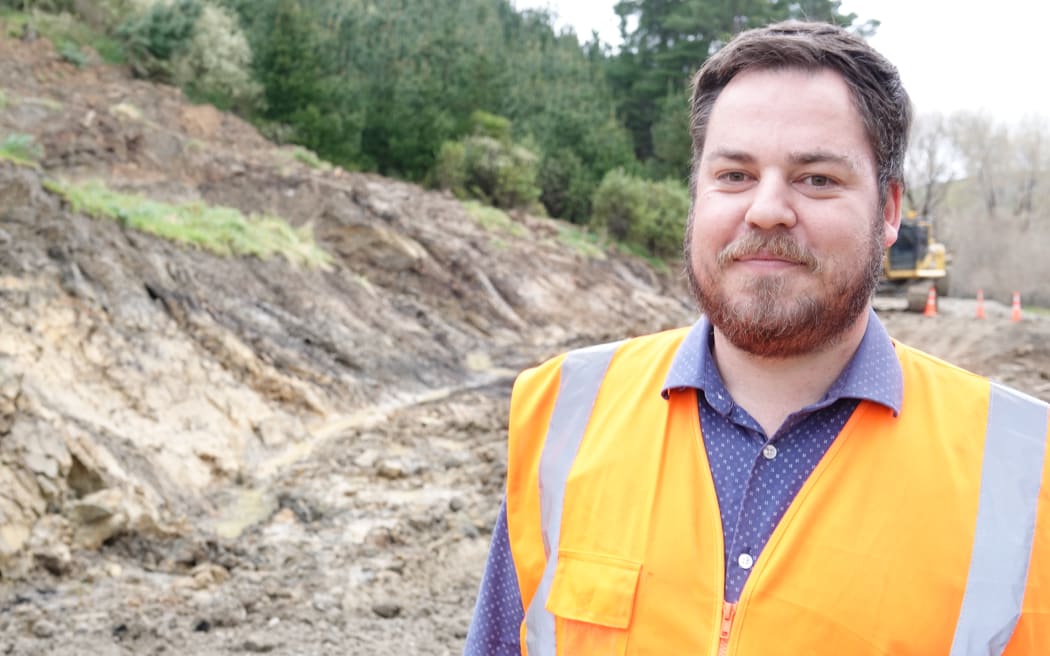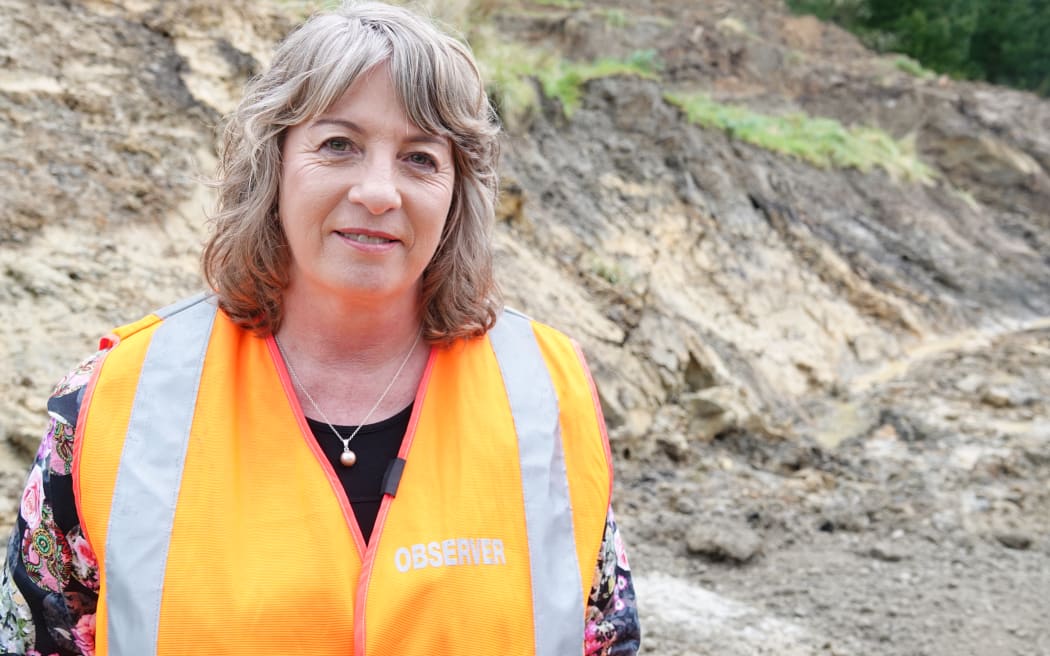A damp autumn, wet winter and stormy spring have left one of New Zealand's most isolated roading networks in need of urgent repairs.
Roads in the eastern Tararua District of the lower North Island are sliding in the mud, with a recent slip cutting a community in two.
The region's small, spread-out population of 19,050 people relies on local roads to stay in touch.
The slip that fell on Route 52 between Pongaroa and Alfredton, northeast of Masterton, last week is a real blow as it turns quick trips into long detours, or walks across muddy farmland.
Pongaroa resident Heather Monk said the effect of closure was already being felt.
"The school kids can't get to school. Some of them are coming over farmland in four-wheel drives to get to the school bus. Some are staying at home, home schooling."
Monk is a volunteer ambulance driver. She said if she needed to head south from the village she would have to drive the long way around, which could turn a 10 minute trip into an hour-long slog, until access was restored.
Even the post was proving a challenge.
"There's one girl that walks across the slip each day to get to farm work. She picks mail up and delivers it."
At the slip site workers are clearing as much of the slushy mess away as they can in the hope of opening a temporary route in the coming weeks.
A lot depends on the weather - the Tararua District has taken a soaking this year, which is one of the wettest since 1950.

Council group manager for infrastructure Chris Chapman said the wet soil was sliding away from hard rock below. Photo: RNZ / Jimmy Ellingham
Tararua District Council group manager for infrastructure Chris Chapman said the slip was caused by saturated soil sliding across hard layers of rock, possibly triggered by a minor earthquake.
"We're seeing the result of a 50,000 cubic metre hill coming down the hillside and taking the road with it down into the creek at the bottom of the gully below the road.
"The road's probably moved about 30 metres down the hill and the guys are still busy trying to just take away some of this material from the hillside above," he said.
"It's just the sheer volume or weight of the sloppy kind of soils sitting on a hard pan of papa [rock]. It can be a bit of a water slide, so it just starts moving."
The council will apply to Waka Kotahi NZ Transport Agency for emergency works funding to fix the road. Such funding usually covers the vast majority of what the local authority spends.
Chapman said it was too early to say how much the Route 52 repairs would cost.
Across its 2000 kilometre network - the fourth largest local one in New Zealand - the council had requested about $13 million of damage repair funding in the past 18 months. Some of the applications were still with Waka Kotahi, Chapman said.
On a drive around the district's eastern roads RNZ saw plenty of slips or slumps.
The $13m is the equivalent of the council's annual roading budget for normal works and maintenance.
And although the northern section of Route 52 is being upgraded, that was paid for by a Provincial Growth Fund grant.

Tararua District mayor Tracey Collis said roads such as Route 52 were lifelines for small towns. Photo: RNZ / Jimmy Ellingham
Mayor Tracey Collis said the network was increasingly coming under pressure from frequent heavy rain and an increase in heavy vehicles as carbon-credit forestry made its mark.
"These rural roads are the lifelines into the town. Any time the journey isn't pleasant there's a cost to the maintenance of the vehicles and, obviously, with the fuel increases everybody's hurting."
For a smaller council such as Tararua District, increased costs from roads being damaged by heavy vehicles and increasingly changeable weather were a perfect storm.
"Where does the water go? This wasn't a huge rain event," Collis said of the Route 52 slip.
"This is just how saturated they are, so people are concerned about the rain and the water that's coming, absolutely."
Federated Farmers Tararua president Sally Dryland said slips such as the Route 52 one added time and inconvenience for staff and stock movements.
It would probably cost farmers, too, if other closures were anything to by.
"You get a fuel bit tacked on to your transport costs because of the extra fuel that the trucking company's had to use," Dryland said.
"You imagine that sort of stuff will start happening out there because they can't do the loop around to get stock away, so there will be increasing costs that people are having to meet."
Waka Kotahi said it was likely to exceed its emergency works budget for the year, but if that happened it would find money from elsewhere to pay for repairs.
A statement from the agency cited the effect of climate change and more severe rainfall on the roading network.

